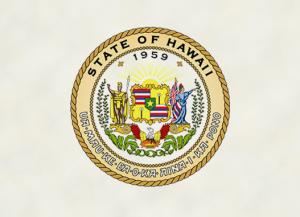Hawaii OKs Program Costs and Rate Treatment

In Hawaii, the Public Utilities Commission has granted a request by the three Hawaiian Electric Company (HECO) affiliates for authority to invest in a modernized demand response management system (DRMS).
In addition to approving the utility group’s DRMS proposal, the commission simultaneously approved an associated cost recovery plan, which was predicated on deferral accounting. The company estimated that the DRMS project will cost about $4.8 million. According to the commission, the DRMS involves a software platform that will serve as a central hub for the administration, integration, and operational dispatch of customer load and generation resources.
The commission found that the DRMS would function as a critical tool for leveraging customer-sited resources to assist in grid operation, thus making the program a key component of a modern electric grid. In deeming the DRMS plan reasonable, the commission emphasized that as the electric utility network continues to transform from one defined by central station generation and one-way power flow to a system in which there are thousands of distributed energy resources (DERs) and multi-directional power flows, there is an emergent and increasing need to ensure that those new resources are able to play an integral role in the functioning of the network.
Underscoring that point, the commission noted that approximately 26% of HECO’s electricity sales on a combined basis were powered by renewable sources in 2016. However, it said, DERs accounted for much higher percentages on Maui and the Big Island, at 37% and 54%, respectively. The commission reported that in the aggregate, 34% of that renewable generation came from distributed generation, specifically customersited, grid-connected solar photovoltaic (PV) systems and wind resources. The commission related as well that it is projected that distributed solar PV will grow from approximately 600 megawatts (MW) today to more than 3,000 MW by 2045.
Given the importance of the DRMS protocol and its expected role in Hawaii’s modernized grid, the commission concluded that HECO’s plan will provide quantifiable benefits to consumers over time. It therefore authorized the utility to
- commit expenditures in excess of $2.5 million for the purchase and installation of the DRMS platform;
- defer the costs of certain computer software and software development costs in an amount not to exceed $3.938 million, exclusive of an allowance for funds used during construction (AFUDC);
- accrue and defer AFUDC on the deferred computer software and software development costs until the inservice date of the DRMS project;
- amortize the deferred costs over a 12-year period beginning the month following actual implementation of the DRMS program;
- recover the revenue requirement associated with the deferred costs and other projectrelated costs, including certain annual software support and maintenance expenses associated with the DRMS, through the Renewable Energy Infrastructure Program Surcharge, until base rates that reflect such costs are approved and in effect; and
- include the unamortized deferred costs (including applicable carrying costs) in rate base in each of the operating companies’ next respective rate cases.
To assure that the DRMS plan works as anticipated, the commission instructed HECO to develop a system of benchmarks and metrics by which to adjudge the program’s performance. The utility group likewise was required to file status reports with the commission within 15 days after completion of each of the four implementation phases set forth in HECO’s proposal. Re Hawaiian Electric Co., Inc., et al., Docket No. 2015-0411, Decision & Order No. 34884, Oct. 18, 2017 (Hawaii P.U.C.).



